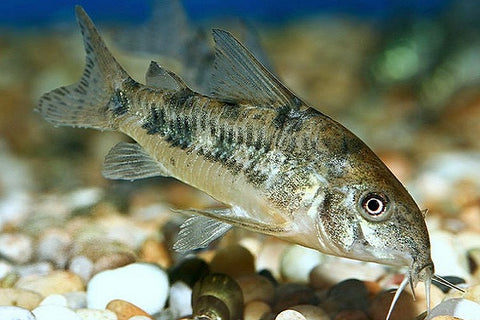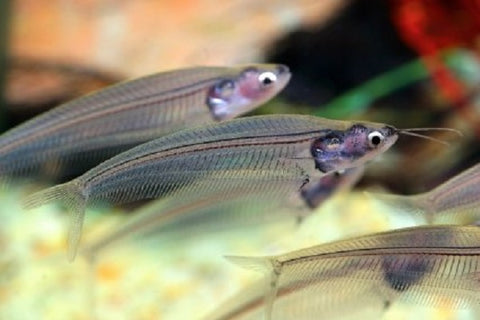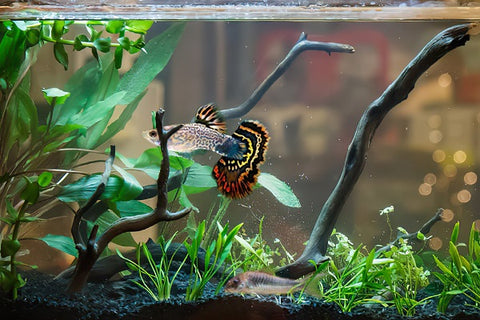Freshwater catfish are the best choice for the fish tank collection. Other than their amazing look and body shape, they are also very funny creatures with some unique behavior that brings them on a list of favorites to any aquarists.
Picking out this high-personality fish for your tank can be easy, but what about caring and feeding for freshwater catfish?
Experienced tank keepers suggest beginners avoid putting catfish in their tank because they are peaceful but aggressive too, and sometimes it is tough to take proper care.
That is why this article is here to share every knowledge about freshwater catfish with their care and feed techniques. So stick with us till the end and you will become a pro aquarist.
Introduction to the catfish
First, let’s understand the lifespan, size, appearance, and behavior of catfish then we will proceed with their caring and maintenance.

Lifespan & Size
Different species have different lifespans, but after proper caring, an average life span of a freshwater catfish is up to 12-15 years.
They can attain their full height of 1-72 inches in their adult period. The smallest catfish is Asian stone catfish, which is 1.3 inches in length only. On the other hand, The Mekong giant catfish is the largest one with a height of 9 feet long.
Appearance
Freshwater catfish are widely known for their unique body shape and personality. They have long barbels through which they can identify their food even in the dark.
They are scale-less species and have large fins with unique coloration that makes them attractive in the fish tank.
There are many varieties of catfish that comes with unique designs, patches, and different shapes. We will discuss the type of fish later in this article.
Behavior
Freshwater catfish are also known as tank cleaners. They mostly spend their time at the bottom of the tank and also need plenty of hiding places.
Depending on the species, some catfish are a type of schooling fish and others can happy to live alone. Some of the catfish are nocturnal in nature.
They are peaceful but are also very aggressive fish. They have no scales, so they usually use their pectoral and dorsal spines for defense. The spines of catfish contain venom glands and their sting is dangerous to us and can cause infections, pain, arterial hypotension, respiratory compromise, and more.
Diet and feeding plan for freshwater catfish
Catfish are omnivores and are bottom feeders, so sinking foods are best for them. They can eat either dead or alive animals and algae plants in the tank. A well-planned diet should be followed which fulfills the nutritive demand in the body.
Research says the catfish need 25-50% of protein for their healthy development. Catfish change their feeding techniques many times until they attain adult size. Aquarists feed once a day during warmer months, but normally twice a day is far better.
The catfish diet is consist of sinking pellets or flake foods. Frozen foods and others like daphnia, tubifex worms, brine shrimp, mysis shrimp, bloodworms, black worms, and more can be added.
Diet preferences vary by the species of catfish, although they attack small fish in the tank as their food.
Important points to consider while feeding your catfish are:
- We have to feed in small quantities that your fish will eat in 1–2 minutes only. This helps us to control overfeeding.
- Two to three times feeding daily with a small quantity of food is beneficial.
- Make sure that your food sinks to the bottom area where they can feed easily.
- In frozen foods make sure that the food is thawed or a little chopped.
- Prepare the food as per the instructions given on the packaging.
Types of catfish
There is a total of around 3,000 species of catfish across 35 different families. As the purpose of the aquarium, there are also hundreds of species so it is difficult to consider them all here. There are some popular freshwater catfish that are chosen for tanks every time.
Listed below are the 10 best types of freshwater catfish:
- Cory Catfish
- Asian Stone Catfish
- Bristlenose Pleco
- Bumblebee Catfish
- Otocinclus
- Clown Pleco
- Gold Nugget Pleco
- Glass Catfish
- Chinese Algae Eater
- Redtail Catfish

Tank setup for freshwater catfish
To establish a suitable habitat for your fish, you have to know the correct water parameters and essential tank supplies, and other details to maintain the healthy life of your little companion.
Water parameters
- Water temperature: 74°~78°F (23°~27°C)
- pH level: 5.0~7.0
- Hardness: 4~8 dKH (or 70~140 ppm)
Tank size
There are many species of catfish out there, so the sizes of the tank vary according to the fish. Glass catfish are 4-6 inches long so 30-gallon tanks are required for them. Those fish of length 1-2 inches required a 20-gallon tank.
As they are schooling fish and if aquarists try to add a group of 6 inches fish then at least a 55-gallon tank is required. They swim happily if we provide them with more free space in the tank.
Tank equipment
To maintain the proper temperature and water parameters in the tank, we have to add a thermometer and heater to maintain the temperature of the catfish. If the tank size is large then the dual filter is necessary to remove the toxicity from the water.
A water test kit is necessary to check up levels of pH, ammonia, nitrate, and nitrite. We can also add a water pump to circulate the fresh water to maintain the oxygen balance in the tank.
Freshwater salt and substrate should be used to spread a familiar environment for your catfish. Other types of equipment like lightning systems and refractometers are also necessary to operate.
Tank decorations
Depending on the species of freshwater catfish, some of them are nocturnal and others like to swim during the day. So natural hiding places are very necessary for them. We can use caves, rocks, and other natural decorative things for the tank.
Plant as decoration is a good idea, although plants help catfish to explore themselves and also give them a place to hide from threats. Plants also help by oxygenating the fish tank and also work as a filtration system in the tank.
Best tank mates for freshwater catfish
Freshwater catfish can easily group up with fish of similar size and temperaments. We have to avoid much smaller fish as they will eat if it fits into their mouths.
They do not become aggressive with similar-sized fish. Thus, there are many options for catfish tank mates. These catfish are also schooling fish, so we can easily add up fishes like guppies, platies, and mollies.

Tank maintenance
To maintain a healthy environment some regular activities is should be added to our schedule.
Water tests should be done to check its parameters because a slight water change can bring heavy stress to catfish.
Schedule checking of the filter as it working properly and also clean the filter basin (where wastes collect in the filter).
Changing the water would directly reduce waste and toxicity present in water. But sudden changes in water can bring heavy stress to the fish and may cause serious health problems. So, we can change 20-30% of the water at a time and intervals of 3-4 days.
Do not overfeed your tank mates and an overstocking tank should also be avoided.
Conclusion
Hope you have learned appropriate knowledge about freshwater catfish.
This article “Care and Feeding for Freshwater Catfish” helps you to choose the right decisions for your tank. You can understand what should be the right way of feeding and caring for catfish, so like other aquarists you can too add them to your tank list.
If you have any unanswered questions or want suggestions for the products for your betta fish aquarium then please leave your message in the comment section.


Comments (0)
Back to Beginner Guide & Advice